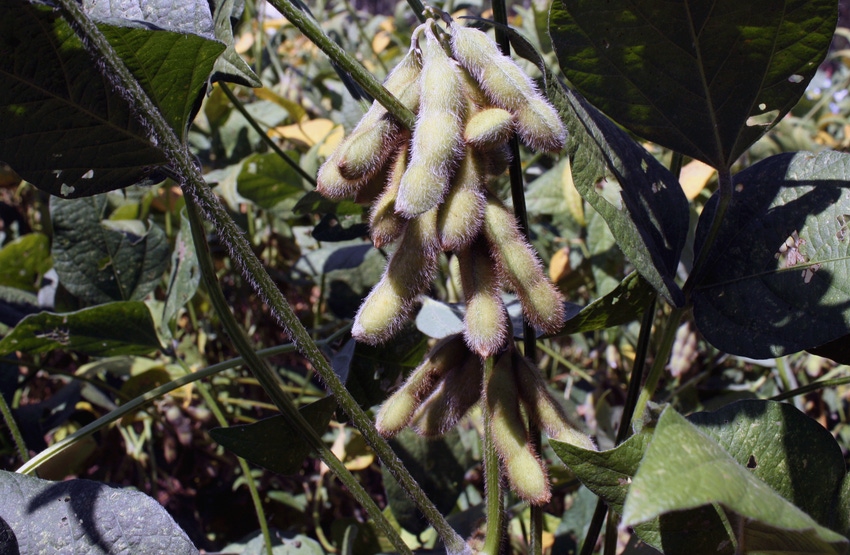
The 'Cadillac Treatment' for high-yield dryland soybeans
The North Carolina “Cadillac” yields ended up being 54 bushels per acre in Beaufort County, 52.5 bushels per acre in Pender County, 53.3 bushels per acre in Sampson County and 79.5 bushels per acre in Surry County.

Jim Dunphy calls last year’s study on maximizing dryland soybean yields “the Cadillac Treatment” because he took steps to achieve as high a yielding situation as possible.
“The first thing we did was go to a variety that does well in a high yielding environment,” Dunphy said at the North Carolina Commodities Conference in Durham Jan. 15, where he released the results of the test. Dunphy is the North Carolina State University Extension soybean specialist.
For the study, Dunphy selected the two highest yielding Group V varieties and the two highest yielding Group VI varieties, varieties that perform well in a 60 bushel per acre yield environment. The varieties he planted in 2015 were Southern States’ SS 5511 N R2, Dyna-Gro’s 32RY55, UniSouth Genetics’ USG 76S 73R and Syngenta’s S76-R6.
He evaluated inputs with the goal of setting up a high yielding environment. The goal was to plant the four varieties from as early as mid-April to as late as mid-May, but Dunphy said, “the weatherman didn’t let us do that. We planted one of them in early May; we planted two of them in late May and one of them the first day in June.”

Alamance County farmer Tom Pritchett, right, gets some tips for producing maximum dryland soybean yields from North Carolina State University Extension Soybean Specialist Jim Dunphy.
Dunphy said the varieties were planted in 15 inch rows at relatively low population rates, 90,000 to 120,000 seeds per acre. “That was on purpose,” he said. “I didn’t want to feed any more plants than necessary. We did use a seed treatment.”
The plots were planted in Beaufort County, Pender County, Sampson County and Surry County.
Nitrogen was added and sulfur was applied to help push yields up. Potassium was also applied because Dunphy explains that potassium is needed for the soybean plants to better utilize nitrogen. Fungicides were also used.
His “Cadillac” yields ended up being 54 bushels per acre in Beaufort County, 52.5 bushels per acre in Pender County, 53.3 bushels per acre in Sampson County and 79.5 bushels per acre in Surry County.
Dunphy said an important lesson learned was the importance of fungicides. The three he used were Topguard, Quadris Top and Priaxor. Looking at all four sites, Dunphy said the research shows that fungicides are worth the money spent. “When we put all four sites together, we got a response to fungicides,” he said. “None of those three gave us a significant response at all four locations; neither did any of them fail.”
Dunphy stressed that fungicide timing is critical. And that has always been a challenge.
“The trick is and has been for years is trying to figure out which one you need when. When is important. It’s often a matter of when more than which. The best time to spray a foliar fungicide is the day before the disease gets there,” he said. “Almost all of these are better at preventing disease than they are at curing disease.”
About the Author(s)
You May Also Like





